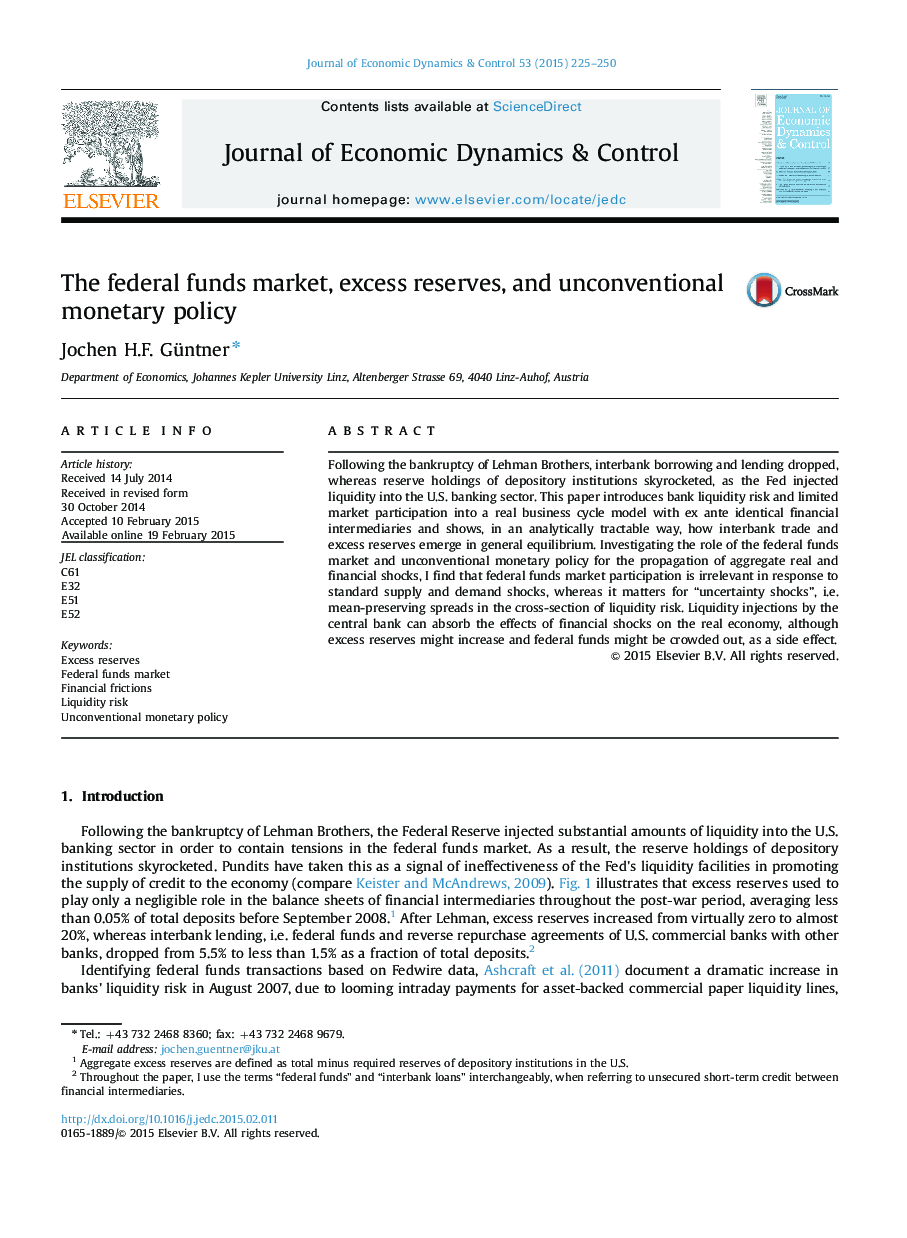| Article ID | Journal | Published Year | Pages | File Type |
|---|---|---|---|---|
| 5098318 | Journal of Economic Dynamics and Control | 2015 | 26 Pages |
Abstract
Following the bankruptcy of Lehman Brothers, interbank borrowing and lending dropped, whereas reserve holdings of depository institutions skyrocketed, as the Fed injected liquidity into the U.S. banking sector. This paper introduces bank liquidity risk and limited market participation into a real business cycle model with ex ante identical financial intermediaries and shows, in an analytically tractable way, how interbank trade and excess reserves emerge in general equilibrium. Investigating the role of the federal funds market and unconventional monetary policy for the propagation of aggregate real and financial shocks, I find that federal funds market participation is irrelevant in response to standard supply and demand shocks, whereas it matters for “uncertainty shocks”, i.e. mean-preserving spreads in the cross-section of liquidity risk. Liquidity injections by the central bank can absorb the effects of financial shocks on the real economy, although excess reserves might increase and federal funds might be crowded out, as a side effect.
Keywords
Related Topics
Physical Sciences and Engineering
Mathematics
Control and Optimization
Authors
Jochen H.F. Güntner,
